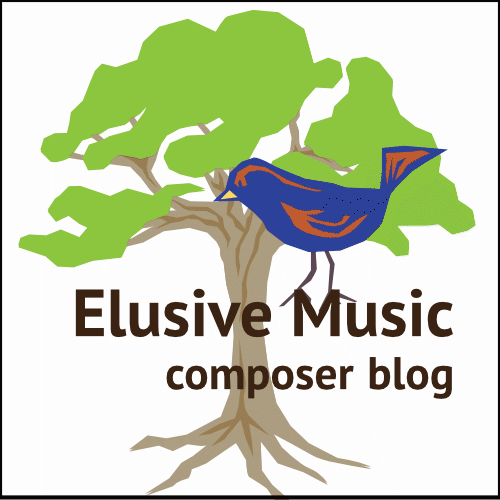Last week, I finally started my series of improv workshops for classical musicians. I’ve been thinking about doing this ever since I went to John Clark’s horn improv workshops in Heath, MA last July. My workshopshttp://www.hmmusic.com/index.html are open to anyone who is interested in classical free improv. We try various styles: modal & melodic, aleatoric, with rhythmic accompaniment or not, full group and small subsets. If you’re in the Northwest of Boston area of Massachusetts, join in the fun — sign up on the Spindrift improv email list to get announcements. Starting in January, I hope we can meet once a month.
I’m inspired by horn teacher and improviser Jeff Agrell, my email mentor who I finally met in Heath. He’s got several recordings and a very fat workbook of improv exercises, or as he calls them “games” so no one will be intimidated. Check it out — Improvisation Games for Classical Musicians.
Artist Sirarpi Heghinian Walzer hosted us in her piano-equipped studio. We had clarinet, violin, cello, oboe, flute, me on horn, percussionist, and 3 pianists.
We did several improvs that sounded kind of minor/modal – lyrical and rich, even if a little dense. We talked about how the string players were getting drowned out, and tried again to play less often and less loud. The clarinetist described an idea from information theory where we started from a single long note and gradually built to dense chaotic and back to simple. We tried that twice, because the first time, we got chaotic very fast. The cellist suggested a similar idea based on weather, where we started out foggy and indefinite and added more drama. We also tried round-the-room duets, where two people played, then the first dropped out and the next in line joined in and so on. One of the pianists in the circle was playing tambourine, and the character of it all changed completely as we the duet all of a sudden had to incorporate non-pitched material.
I hope I did OK as a leader. I think there was a lot of contribution from the whole group and everyone was really engaged. Some had improvised in other contexts, like jazz and klezmer and that came through and added variety. What I hope we’ll all learn over the course of several workshops is to hear when we are actually making music together, rather than just making up interesting bits on our own instrument.
There’s ideas I want to work on some more. Being comfortable with silence, either of your own voice, or allowing silence to occur in the whole ensemble (without it necessarily being the end of the piece). Syncing up with someone else, rhythmically or accompanimentally. Related to that, establishing a supporting background texture that allows softer instruments to shine through as soloists.
People were interested in improvising in a key, which often ends up being beautiful, moderate volume, all voices noodling comfortable tunes, and a little new-agey. It was interesting and textured, and the small audience of Sirarpi and Frederic enjoyed hearing it. Sirarpi got out some small canvases and was inspired to paint along with us. Eventually one of the pianists joined her. The gentle improvisation was not bad, but I’d also like to incorporate – in different improvisational pieces, probably – noise, sudden bursts of sound, atonal lines, more dynamic or aggressive call and response, in essence, a bit more drama. So there’s some ideas for future sessions!

Leave a Reply to Anonymous Cancel reply